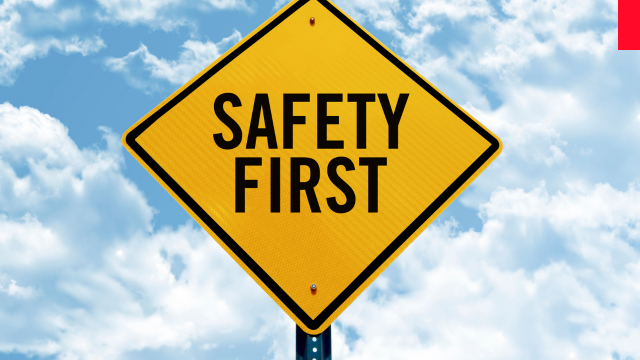Amplify Your Leadership Voice Worldwide
Join 7,000+ industry leaders sharing insights with millions of professionals globally
Join 7,000+ industry leaders sharing insights with millions of professionals globally

Since 1971, the National Safety Council has championed safety, especially during its Safety Week Campaign starting near March 4th, their Foundation Day. This campaign boosts safety awareness across sectors, offering customisable activities for all.
Annually, the National Safety Council sets a theme for National Safety Day and Week. This year’s theme is “Safety Leadership for ESG Excellence.”
In the past, National Safety Week aimed mainly at raising awareness about workplace hazards. However, 2024 brings a shift. This year’s theme, “Safety Leadership for ESG Excellence,” highlights the vital role of leaders in integrating safety into all aspects of a company’s operations.
This theme resonates with ESG principles, advocating for businesses to operate in a manner beneficial to the environment, society, and governance practices. As National Safety Week 2024 kicks off, the focus is on empowering leaders to prioritise safety across the organisation.
But why is safety leadership crucial for achieving ESG excellence? Let’s explore further.
The goals of National Safety Day/National Safety Week are to:
These objectives aim to cultivate a strong culture of safety, health, and environmental responsibility in workplaces.
Safety leadership surpasses mere compliance with safety regulations. It fosters a culture where everyone actively contributes to safety, aligning with ESG goals:
Environmental Impact: Addressing safety concerns efficiently manages resources, reducing waste and environmental harm. For example, preventing spills and conserving energy promotes sustainability.
Social Responsibility: A safe workplace enhances employee well-being, reducing injuries and boosting job satisfaction. This improves retention, morale, and engagement, vital for social responsibility.
Stronger Governance: Effective safety leadership showcases responsible management, attracting investors. It mitigates legal risks, ensures compliance, and enhances governance within the organisation.
Established by the Government of India on March 4th, 1966, the National Safety Council (NSC) aims to promote safety, health, and environmental awareness (SHE) across the nation. As a non-profit organisation, it conducts various activities like training programs, conferences, and workshops, along with providing advisory services such as safety checks and hazard assessments.
Additionally, NSC develops educational materials to spread awareness about health, safety, and environmental (HSE) issues. Actively engaged in events like National Safety Day/Week, Fire Service Week, World Environment Day, and Road Safety Week, NSC has hosted significant conferences and executed essential projects over the years.
With more than 50 years of experience, NSC possesses extensive expertise in tackling emerging HSE challenges due to technological advancements. Initially operating from modest facilities in Mumbai, NSC now operates from its own state-of-the-art headquarters in Navi Mumbai, enhancing its ability to serve members effectively.
Since its inception, NSC has been committed to leading safety initiatives nationwide through voluntary efforts, under the guidance of its Governing Body.
“On this Day, I solemnly affirm that I will rededicate myself to the cause of safety, health and protection of environment, will do my best to observe rules, regulations, procedures and develop attitudes and habits conducive for achieving these objectives.
I fully realise that accidents and occupational diseases are a drain on the national economy and may lead to disablements, deaths, harm to health, damage to property, social suffering and general degradation of environment.
I will do everything possible for the prevention of accidents, occupational diseases and protection of environment in the interest of self, family, organisation, community, and the nation at large.”
These items aim to enhance safety awareness and offer practical support for everyday use.
The importance of National Safety Day 2023 lies in its role as a crucial reminder of safety and health, especially in workplaces. It raises awareness about potential risks, emphasising preventive measures.
In India, occupational safety is vital, not just for worker protection but also for productivity, cost reduction, and regulatory compliance. To reap these benefits, effective safety measures must be implemented by employers.
Moreover, National Safety Day underscores the collective responsibility of employers, employees, and the government to ensure a safe and healthy work environment, promoting active participation in maintaining safety and well-being.
Join industry leaders who have shared their insights with millions of professionals globally.
Copyright © 2025 The Corporate Women. All Rights Reserved.